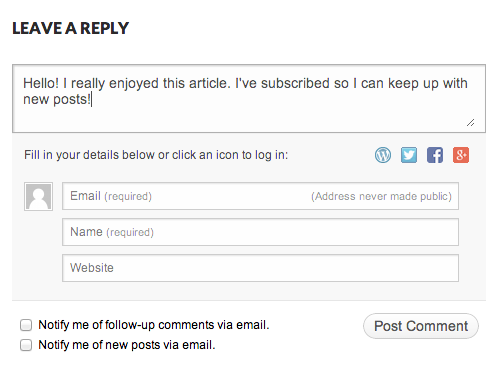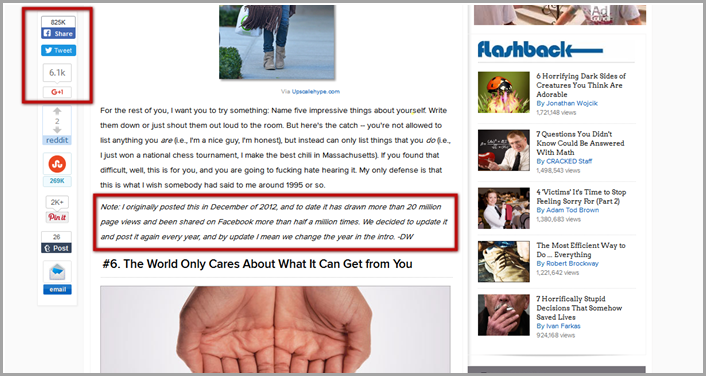 Website traffic is imperative for an online business to succeed. The more visitors a company receives on their website the more people will view blog posts, purchase products, and click on ads. In other words, website traffic leads to a site getting and staying in profit. We discuss how to get people to visit a website and generate sales during our free webinar training. Keep reading to learn how beginners can drive massic traffic to their new website.
Website traffic is imperative for an online business to succeed. The more visitors a company receives on their website the more people will view blog posts, purchase products, and click on ads. In other words, website traffic leads to a site getting and staying in profit. We discuss how to get people to visit a website and generate sales during our free webinar training. Keep reading to learn how beginners can drive massic traffic to their new website.
Forbes recommends using social media with hashtags to get traffic to your website. People search for various topics using hashtags, so naturally, if you include them in your tweets, for example, it’s more likely people will find your articles that way.
It’s probably no surprise to see social media on this list. It’s an effective way to get more eyeballs on your content and tap into the personal networks of your existing fans. What may surprise you is the importance of hashtags. People have become increasingly picky about the content that they consume, which means they’re turning to hashtags as a way to streamline the influx. Smart use of hashtags enables you to precisely target your ideal customer and expand your reach beyond your existing audience.
Don’t forget about how important email marketing is to help a site thrive. ThriveHive discusses how you can use email marketing to generate money and keep your readers updated on recent blog posts, product offerings, and more.
Sending out regular newsletters and promoting offers through email is a great way to stay in touch with your customers and can also help to get traffic to your website. Provide useful information and links to pages on your website where they can learn more, such as through blog posts and offer landing pages. Just make sure that you don`t continually bombard your readers with emails or your customers will either disengage with, delete, or unsubscribe from your emails.
Also, put careful thought into your email subject lines. These heavily influences whether or not a user opens your email. If your emails never get opened, they can’t supply traffic to your site!
Wordstream says it’s all about irresistible headlines. It makes sense if you think about it. No one likes to read an article that has a drab headline. Make sure the title stands out and gets people’s attention, otherwise it’s likely the article will get ignored.
Headlines are one of the most important parts of your content. Without a compelling headline, even the most comprehensive blog post will go unread. Master the art of headline writing. For example, the writers at BuzzFeed and Upworthy often write upward of twenty different headlines before finally settling on the one that will drive the most traffic, so think carefully about your headline before you hit “publish.”
Neil Patel recommends responding to comments on other people’s blogs without your comments coming across like spam. In other words, stick to genuine comments that help the blog owner generate more traffic and they’re more likely to give you a shoutout or visit your website in return.
Have you heard of a popular site called Mashable? It was founded by Pete Cashmore.
When he launched his competing site to TechCrunch, no one knew about him and no one cared to listen to him as he was based in Scotland instead of Silicon Valley.
But do you think that stopped him? Of course not!
So, what did he do? He went out there and commented on every competing tech blog. And not only did he comment, but he always tried to be the first commenter.
See, when you leave a comment on a blog, most ask you to put in your name, URL, and comment.
Assuming you are leaving valuable comments and nothing spammy, you’ll notice that you’ll get referral traffic in your Google Analytics.
This will be because a very small percentage of people are clicking on your name when you leave a comment.
And considering some of the most popular blogs on the web receive millions of visitors each week, it’s not that hard to drive a fraction of a percent of their traffic back to your site.
The key with this strategy is to be one of the first commenters as that ensures your comment is at the top. The other key, of course, is that your comment must add value.
For example, if you own a marketing related product or service, marketing blogs would be a great place to comment. But what do you think will happen if you leave this kind of standard comment:
Nothing. On the flip side, if you put in some effort to write something that benefited the reader, you’ll have a chance at getting some traffic.
An example could be something like this…Neil, I love the actionable tips on generating traffic for a brand-new site within the first 3 months of launching it. But I know you didn’t discuss much if any about SEO.
I know SEO is a long-term strategy, but people should get a head start right away or else it will take that much longer to get loved by Google.
One thing that I recommend every site to start off with is simple keyword research. You can use any free keyword research tool like Google Keyword Planner and type in your competitor URL. Google Keyword Planner will then suggest keywords and even show you the cost per click.
By going after keywords that aren’t competitive and have a higher cost per click, you’ll find that you can generate search traffic at a much faster pace and these keywords will drive sales. As keywords with a high cost per click tend to mean that they convert.
Speaking of blogging, another way to boost the traffic to your brand new website is by guest blogging on other blogs. ThriveHive blog provides a brief explanation on how to go about doing that:
Having a micro-influencer publish a blog post on your site can help to increase your web traffic, as they are likely to share the post with their large audience. It can also help to add more variety to your content and show your visitors that you are active in your field. Alternatively, you could ask the influencer to mention your business in their own review or round-up post, or you could turn an interview with the influencer into a blog post that is likely to get traffic.
You can also be a guest blogger. Identify complementary businesses in your area whose audience is relevant to your business. See if you can contribute a post to their blog with a link back to your website. Make sure your content is relevant and useful to their audience, so that it’s more of an even exchange.
Similarly, you can also invite people to guest post on your blog. Wordstream explains how to approach people to guest post on your blog and how it can increase traffic to your website:
Guest blogging is a two-way street. In addition to posting content to other blogs, invite people in your niche to blog on your own site. They’re likely to share and link to their guest article, which could bring new readers to your site. Just be sure that you only post high-quality, original content without spammy links, because Google is cracking way down on low-quality guest blogging.
Also related to blogging is revamping older blog posts, which Jeff Bullas says can do wonders for your website. He discusses how older posts have the possibility of going viral, and in the process make you a lot of money!
This is where you use your older, high ranking content to get some more limelight and renew the audience’s attention.
If you have published some (relatively) high ranking content in the past, it’s time to whip it out again. Review and revamp the posts, update it with timely information (and edits), add internal links to related (and newer) content, and update the meta tags + description with keyword-rich (not keyword-stuffed) details.
A brilliant example is Cracked – a humor website with awesome content. The former editor (and NYT bestselling author) David Wong wrote a beautiful, poignant article that served as a slap in the face to every entitled, idle idiot out there – “6 Harsh Truths that will Make You a Better Person”. In 2016, it’s gathered “over 20 million page views and half a million Facebook shares”.
He wrote it in 2012.
Yep, they’re proud of it alright
Cracked constantly creates awesome content, so the fact that they keep updating and re-posting it speaks volumes about this particular post (both in terms of content quality and behind-the-scene stats). This is also the post that’s often found in their “Recommended for your pleasure” section of related posts at the bottom of the page.
Do the same with your own blog – look at your previous posts with an objective eye (rank + quality + stats = winner) and leverage them for an added traffic boost.
Last, but certainly not least, Forbes urges website owners to set up an affiliate program which can really leverage other people’s audiences. See why this is the case and why you should consider setting up a program:
Affiliate programs allow you to boost traffic by leveraging other people’s audiences. By offering publishers a commission on sales they generate, you’re incentivizing positive reviews and word of mouth. Best of all, you only pay out when a genuine sale is made, meaning there’s minimal risk involved. Once your affiliate program is set up, you can leave it on autopilot and focus on other areas of your business. To get started, leverage a list of the best affiliate programs and decide which one is right for you.
Setting up a brand new site is no easy feat, but dedication and smart planning you can create a site that’s fun and profitable. Join us for our free webinar training to learn how to take advantage of organic — and massive — traffic for your new website. Our goal is to offer you tips on how you can succeed, and make money online! You also can form a business that you love along the way!
Sources: Neil Patel, ThriveHive, Forbes, Wordstream, Jeff Bullas
CHALLENGE Yourself to Profit!
Free Download: Build Your Profit-Generating Online Business With This Free Blueprint
Sign Up, follow the easy steps and You'll get the tactics, strategies & techniques needed to create your online profit stream. It's free!






